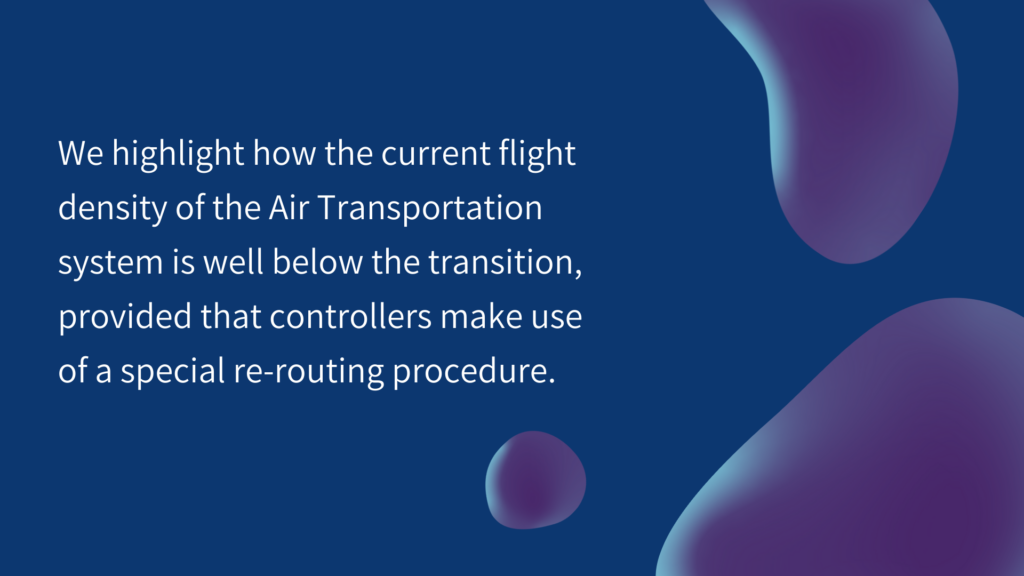Air Transportation represents a very interesting example of a complex techno-social system whose importance has considerably grown in time and whose management requires a careful understanding of the subtle interplay between technological infrastructure and human behavior. Despite the competition with other transportation systems, a growth of air traffic is still foreseen in Europe for the next years. The increase of traffic load could bring the current Air Traffic Network above its capacity limits so that safety standards and performances might not be guaranteed anymore. Lacking the possibility of a direct investigation of this scenario, we resort to computer simulations in order to quantify the disruptive potential of an increase in traffic load. To this end we model the Air Transportation system as a complex dynamical network of flights controlled by humans who have to solve potentially dangerous conflicts by redirecting aircraft trajectories. The model is driven and validated through historical data of flight schedules in a European national airspace. While correctly reproducing actual statistics of the Air Transportation system, e.g., the distribution of delays, the model allows for theoretical predictions. Upon an increase of the traffic load injected in the system, the model predicts a transition from a phase in which all conflicts can be successfully resolved, to a phase in which many conflicts cannot be resolved anymore. We highlight how the current flight density of the Air Transportation system is well below the transition, provided that controllers make use of a special re-routing procedure. While the congestion transition displays a universal scaling behavior, its threshold depends on the conflict solving strategy adopted. Finally, the generality of the modeling scheme introduced makes it a flexible general tool to simulate and control Air Transportation systems in realistic and synthetic scenarios.


